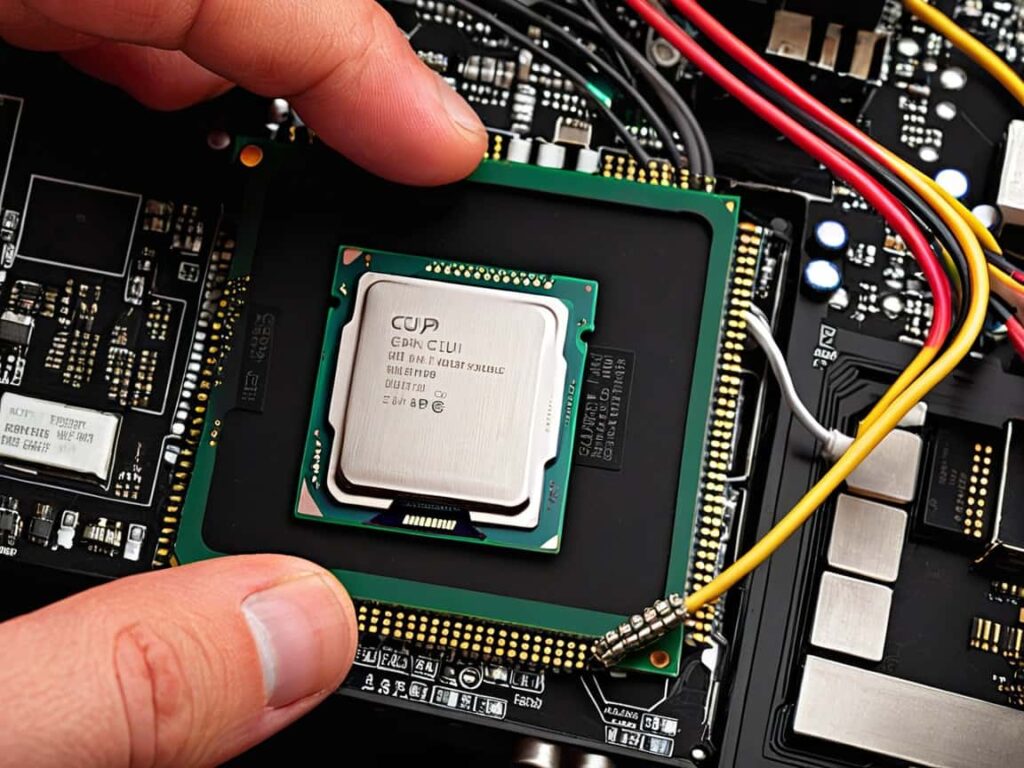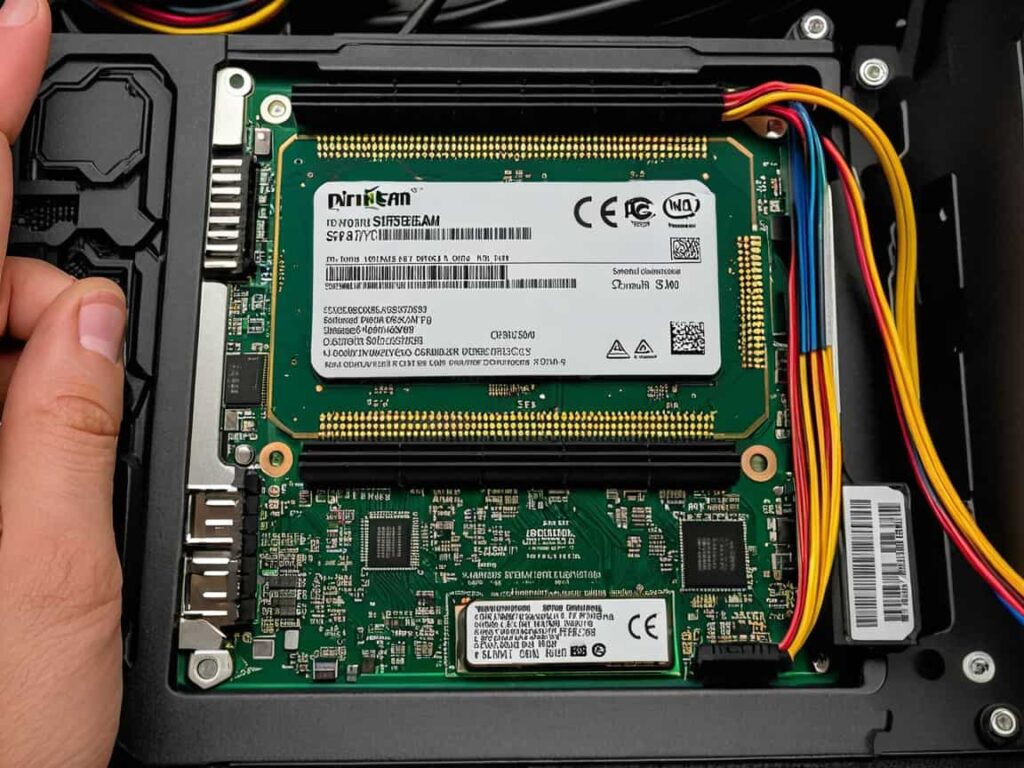I recently encountered an issue with AdoptOpenJDK 11.24 where the CPU usage was pegged at 100% due to PrintStream. This high CPU load caused performance issues during my development process. After some investigation, I found that optimizing PrintStream usage helped resolve the problem and improved system performance.
AdoptOpenJDK 11.24 can cause high CPU usage, reaching 100%, due to issues with PrintStream. This problem may affect performance in Java applications. Optimizing PrintStream usage can help resolve the CPU pegging issue and improve efficiency.
This article will discuss”adoptopenjdk 11.24 8 pegging cpu due to printstream”
What is AdoptOpenJDK 11.24?

AdoptOpenJDK 11.24 is a free, open-source version of Java 11 that provides a stable and reliable platform for building and running Java applications. It is popular for its performance and long-term support. AdoptOpenJDK ensures that Java applications run smoothly with security updates and improvements, making it a trusted choice for developers worldwide.
Read More: Is World Of Warcraft Cpu Or Gpu Intensive – Does It Rely
Why is AdoptOpenJDK 11.24 causing high CPU usage?
Inefficient PrintStream Usage:
Inefficient PrintStream usage occurs when PrintStream is used too frequently or improperly, causing excessive CPU usage. This can slow down your system and affect performance, especially in Java applications. Optimizing or reducing PrintStream usage can solve this issue.
Heavy Logging Operations:
Heavy logging operations occur when a program generates large amounts of log data, which can slow down performance. This happens because logging consumes CPU and memory resources, especially if done frequently or without proper management of log levels.
Thread-Safety Issues:
Thread-safety issues occur when multiple threads in a program access shared data at the same time, leading to errors or unexpected behavior. These problems can cause crashes, incorrect results, or slow performance in multi-threaded applications.
Resource Management:
Resource management refers to efficiently using and organizing resources, such as time, money, and materials, to achieve specific goals. It helps ensure that resources are used wisely, avoiding waste, and improving productivity in both personal and business settings.
Memory Leaks:
Memory leaks occur when a program fails to release memory it no longer needs, causing it to accumulate over time. This can slow down or crash the system as it uses up available memory. Proper memory management can prevent leaks.
How does PrintStream contribute to CPU pegging?
- Excessive Output: Frequent or large-scale output operations using PrintStream can lead to high CPU usage as it continuously processes and prints data.
- Synchronized Nature: PrintStream is often synchronized, which can cause additional CPU overhead, especially in multi-threaded applications.
- Blocking Operations: Printing to the console or a file can block the main thread, forcing the CPU to wait for the I/O operation to complete.
- Resource Waste: Inefficient handling of PrintStream, such as unnecessary calls or excessive logging, consumes more CPU cycles than needed.
- Unoptimized Output: If PrintStream is not used efficiently, it can result in repetitive or redundant printing, further increasing CPU load.
Is this problem specific to AdoptOpenJDK 11.24?
Not Exclusive:
Not exclusive means something that is not limited or restricted to one group or individual. It indicates that more than one person or entity can have access, use, or participate in something without being the only one involved.
Version-Specific:
Version-specific refers to details or features that are unique to a particular version of a software or product. These variations can affect performance, compatibility, and functionality, making it important to consider which version you are using for optimal results.
General Java Issue:
A general Java issue can refer to common problems developers face when working with Java programs, such as memory leaks, performance issues, or errors in code. These problems can affect how programs run and can be solved with debugging and optimization techniques.
Possible Fix in Updates:
Possible fixes for the CPU pegging issue in AdoptOpenJDK 11.24 might be included in future updates. These updates could address PrintStream-related performance problems, improving CPU usage and overall application efficiency for better system performance.
Environment-Dependent:
Environment-dependent” means that a system or application’s performance can vary based on the specific environment it runs in, such as hardware, operating system, or network conditions. Factors like these can affect how software behaves or performs.
What is PrintStream in Java?
PrintStream in Java is a class used to send output to the console or files. It allows printing messages, errors, or data in a readable format. The most common use of PrintStream is with System.out, which prints to the console. It supports various data types, making it useful for debugging and displaying information in Java applications.
What does it mean for the CPU to be pegged?

When the CPU is pegged, it means the processor is working at its maximum capacity, running at 100% usage. This can cause your computer or application to slow down because the CPU can’t handle more tasks or process information faster. It often leads to poor performance, delays, and a lagging system experience.
Read More: Is Cs2 Cpu Or Gpu Intensive – Optimize Your Setup Now!
What are the symptoms of CPU pegging caused by PrintStream?
The symptoms of CPU pegging caused by PrintStream include slow system performance, lag, and high CPU usage. Your application may become unresponsive or sluggish, especially when it continuously prints output to the console or files. This can result in the system running at full capacity, causing delays in processing and a noticeable drop in performance.
What alternatives to PrintStream can reduce CPU usage?
To reduce CPU usage, you can use logging frameworks like Log4j or java.util.logging instead of PrintStream. These alternatives manage output more efficiently and prevent high CPU usage caused by excessive or continuous printing. By configuring the log level and output settings, you can control the amount of data logged, improving overall performance.
How can I fix CPU pegging caused by PrintStream in AdoptOpenJDK 11.24?
Limit PrintStream Usage:
Limit PrintStream usage by reducing the number of print calls in your code. Too many print statements can increase CPU usage, especially in loops or high-frequency tasks. Use efficient logging tools to manage output and improve performance.
Use Efficient Logging:
Use efficient logging to minimize CPU usage by replacing PrintStream with advanced logging frameworks like Log4j or SLF4J. These tools handle logging better, reducing resource consumption and improving application performance, especially during heavy workload operations.
Buffer Output:
Buffer output means temporarily storing data in memory before sending it to its final destination, like a file or display. This helps improve performance by reducing the number of direct write operations during processing.
Adjust PrintStream Settings:
Adjusting PrintStream settings can reduce high CPU usage in Java applications. Limit the frequency of output, buffer logs, or use alternative logging tools. This helps improve performance and prevents the CPU from being overloaded by PrintStream operations.
Upgrade JDK Version:
Upgrade your JDK version to access the latest features, better performance, and improved security. Newer versions fix bugs and enhance stability, ensuring your Java applications run smoothly. Regular updates also keep your system safe and efficient.
Is this issue more likely in multi-threaded applications?
Yes, this issue is more likely in multi-threaded applications. When many threads use PrintStream at the same time, it can create high CPU usage due to resource competition. This can slow down the system and reduce performance. Using better logging methods or limiting PrintStream can help fix this issue.
Can this issue affect Java applications running in production?
Yes, this issue can impact Java applications in production by causing high CPU usage, which slows down performance. It may lead to delays, system lag, or unresponsive behavior, especially during heavy output operations. Identifying and fixing PrintStream-related inefficiencies is important to ensure your application runs smoothly without affecting the user experience.
How do I identify if PrintStream is causing the CPU issue?

To check if PrintStream is causing high CPU usage, monitor your application with a performance tool like VisualVM or a system resource monitor. Look for threads showing high CPU usage linked to PrintStream operations. Reduce the frequency of printing logs or switch to a logging framework to improve performance.
Read More: Is Vr Cpu Or Gpu Intensive – Find Out Here!
Does the issue occur on all operating systems?
The issue with AdoptOpenJDK 11.24 and high CPU usage caused by PrintStream can happen on any operating system. However, the impact may vary based on the system setup and workload. It is important to monitor performance on your specific OS to identify and resolve the problem effectively.
FAQs:
1. What causes high CPU usage in AdoptOpenJDK 11.24?
High CPU usage in AdoptOpenJDK 11.24 is often caused by inefficient use of PrintStream, which can lead to excessive output operations and strain on system resources.
2. How can I fix CPU pegging caused by PrintStream?
To fix CPU pegging, optimize PrintStream usage by reducing the frequency of output operations or consider using alternative logging methods like Log4J.
3. Does the issue occur on all operating systems?
Yes, the issue can occur on any operating system where AdoptOpenJDK 11.24 is running. However, its impact may vary depending on the system configuration and workload.
4. Can updating AdoptOpenJDK resolve the issue?
Updating to a newer version of AdoptOpenJDK or switching to a different JDK distribution may fix the issue, as newer versions often have performance improvements.
5. Is this problem common in multi-threaded applications?
Yes, multi-threaded applications are more likely to experience this issue, as multiple threads may simultaneously interact with PrintStream, leading to high CPU usage.
6. What are the symptoms of CPU pegging caused by PrintStream?
Symptoms include slow system performance, lag in applications, and high CPU usage, especially during heavy output operations with PrintStream.
Conclusion:
High CPU usage in AdoptOpenJDK 11.24, caused by PrintStream, can significantly affect the performance of Java applications. The issue is often seen when PrintStream is used inefficiently, particularly in multi-threaded environments or applications with frequent output operations.
To resolve the problem, optimizing PrintStream usage or switching to alternative logging frameworks like Log4J can help.
